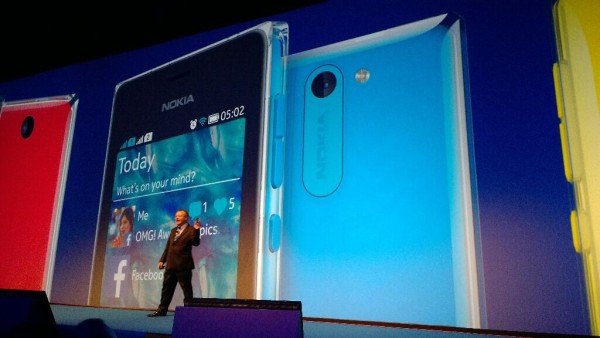Nokia has unveiled its first phablets as well as its first tablet computer at a company event in Abu Dhabi.
The Windows Phone handsets introduce the ability to change which objects in a photo are in focus after it is taken.
The Windows RT tablet has a 4G data chip, unlike Microsoft’s recently unveiled Surface 2.
Nokia World in Abu Dhabi is likely to be remembered as the Finnish firm’s last major event before it completes the sale of its hardware unit.
Microsoft agreed to buy the business for 5.4 billion euros ($7.4 billion) in a deal which the companies have said should be finalized by early 2014.
Microsoft’s share of the handset and tablet markets is growing but from a relatively low level, according to market research firm Gartner.
Windows Phone took a 3.3% share of smartphone sales in the April-to-June quarter, said the firm, with Nokia proving the most popular brand.
It also forecast that about 1.7% of all tablets shipped over 2013 as a whole would be powered by either Windows RT or the full Windows 8 operating system.

Nokia showed off two phablets at the UAE launch. Both the Lumia 1520 and Lumia 1320 feature 6in (15.2cm) displays, allowing extra rows of apps to be displayed on their home screens than possible on smaller models.
The firm said that the extra space would also make it easier to use the phones’ touchscreen keyboards, suggesting this would appeal to business users who used productivity software.
A new Beamer app will allow the phones to stream the contents of their screens onto to a web browser on a separate display. It works by sending data via Nokia’s computer servers.
Another new app – Refocus – lets owners determine which parts of a photograph are in focus and which are blurred after it is taken. The phones achieve this by taking a series of images in quick succession at different focus lengths rather than replicating the light field effect captured by a Lytro camera.
The Lumia 2520 becomes the only Windows RT tablet made by a manufacturer other than Microsoft.
Dell, Asus, Lenovo, Acer and Samsung had all initially backed the platform only to later change tack.
The operating system runs on an ARM-based chip allowing it to offer superior battery life to the full Windows 8 system running on tablets powered by x86 processors, but it does not support as many programs.
Nokia’s tablet is slightly more compact than Microsoft’s version and also distinguishes itself by supporting an optional 4G Sim card.
However, bearing in mind Microsoft has already taken a $900 million write-down after weak sales of its original Surface RT tablet, one analyst questioned whether the firm would want to produce two competing models.
Nokia also added three models to its Asha range of low-end handsets targeted at emerging markets and shoppers on a budget. They run Nokia’s proprietary Series 40 OS rather than Windows Phone.
The most expensive of the devices, the Asha 530, now supports 3G data in addition to 2G, allowing faster internet access.
[youtube bJ_BQ5_B8ho 650]
